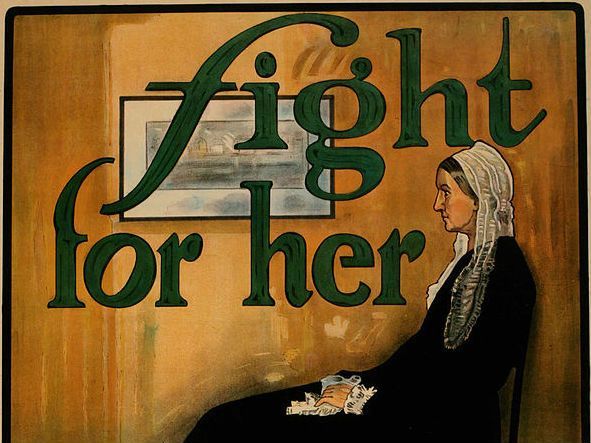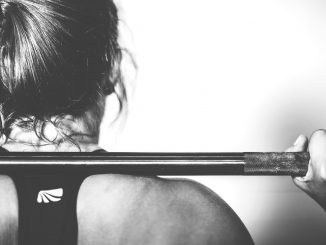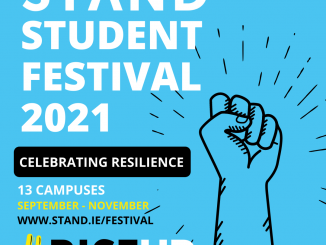
It’s hard to recall many female figures of Irish history being discussed in our secondary school textbooks. If they were mentioned, it was as secondary participants. Of course we all know Constance Markievicz, our first female TD, and later on Mary Robinson, our first female president. We got a few paragraphs to outline the work of Cumann na mBan, the Irish women’s Republican organisation.
If your history book stretched that far, you might remember the fascinating story of Rose Dugdale, the IRA volunteer who commandeered a raid on Russborough House in 1974, which resulted in the theft of a highly valuable Vermeer, along with other paintings. But there had to have been others.
Now, with the newly launched Women’s Museum of Ireland, those “others” as well as the more famous women of Irish history are to be given prominence.
The museum is the brainchild of Kate Cunningham and Jean Sutton – two recent Trinity graduates. Jean is the co-editor of Siren Magazine, a feminist publication which won Magazine of the Year at last year’s Student Media Awards and has since been relaunched online.
Jean first conceived the idea for an Irish Women’s Museum on a trip to Vietnam in 2010, where she visited a woman’s museum and was struck by the similarity between the histories of Vietnam and Ireland. “One day towards the end of the trip we visited the women’s museum and I thought that it would be an easily transferable concept to Ireland. War and occupation are a huge part of Vietnamese history, and of Vietnamese women’s history, too.” But it was only in November that her idea began to take flight, when a casual joke on Facebook became a call to action.
“[The Women’s Museum] was born out of a Facebook conversation where Jean proposed that we find a purpose for one of the unoccupied NAMA buildings. She said ‘Why don’t we put a women’s museum in there?’ just to see what people’s reaction would be,” says Kate. “For the first few days we were just joking around, making different suggestions. Then we thought: why don’t we just do it?.”
Neither Jean nor Kate studied history and knew very little about women’s history in Ireland, which they took as indicative of the general public as a whole. “We felt that we had incredibly impressive women in Ireland that deserve to be more widely recognised. When you read about or study history women aren’t really referred to so much and you take it as fact, but it’s kind of impossible that all these events happened with only half the population taking part,” says Kate.
Jean told The College View that the recent report on the Magdalene laundries is an example of how women’s history in Ireland has been largely overlooked: “We need to start telling our own story and the truth of it all. We’ve known about the Magdalene laundries for years, but the report is only coming out now. Also, you can’t sully the name of Haughey to some elderly women in the country. The Succession Bill in the 1960s [which protected the inheritance rights of wives and children] changed the course of their lives for the better. I was told about a different man growing up in school, while my Granny sang his praises. I think a women’s museum encourages looking at history differently – through a prism that tells you a narrative rather than shows you a date. Women’s history tells a story of this nation that you currently have to dig for.”
With all this rich history, it seems strange there have been no plans for an Irish women’s museum until now. That is not to say that women’s history has not been researched and chronicled in this country – many prominent Irish universities have women’s studies departments, and organisations like the Countess Markievicz and Sheehy-Skeffington Schools’ which hold annual forums on women’s studies and human rights.
“We’re just a group of women who feel we can do this now,” Jean told The College View. “I don’t have a family, or a mortgage. I can give my time outside of work to this project. People have told us that it’s a great idea, but I’m sure some other people have thought about it. I just feel the fact we’ve gone public with our ambitions means we have something to push us towards making this a reality.”
In 1869, a Sunday Review journalist wrote: “A learned girl is one of the most intolerable monsters of creation”. The writer would undoubtedly be delighted to know that over a century later, his words are being used as a title for an exhibition on women in education. “Monsters of Creation” – shown in the Trinity Long Room Hub – launched the Women’s Museum in early March. The exhibition proved so popular that it was extended by another week.
“[The Trinity Equality Office and the Centre for Gender Studies] had heard about us and were compiling a programme for International Women’s Week, and they thought it would be a good launch pad for us,” says Kate. “They were putting together a panel of women in education and it went from there. We had Professor Sarah Parks in with Catherine McGuinness to launch the event and the museum and they spoke about how education was really in a lot of ways the start of women’s liberation in Ireland. It really empowered women and still does – it gives women autonomy.”
At the moment, the museum does not have a permanent building. Kate and Jean have several plans for funding, including seeking out private donations and applying for government grants. Until then, they will continue staging pop-up exhibitions as well as updating the Women’s Museum of Ireland website, which features articles on notable Irish women like the journalist Mary Raftery and fashion designer Sybil Connolly.
A common misconception about the lack of women in history is that women must not have done anything to merit a place in the textbooks. Jean, Kate and the Women’s Museum of Ireland want to change this view. The women of Irish history, silent for so long, can now stand up and be recognised.
Valerie Loftus
Image: wikimediacommons




Leave a Reply